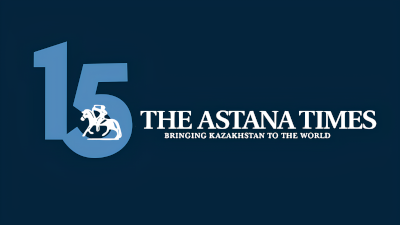ASTANA – Kazakhstan’s cities are more than just points on a map; their names carry deep historical, cultural, and linguistic significance. Kyzdarkhan Rysbergen, doctor of philology, sheds light on the origins and meanings of the country’s city names in an interview with Kazinform.
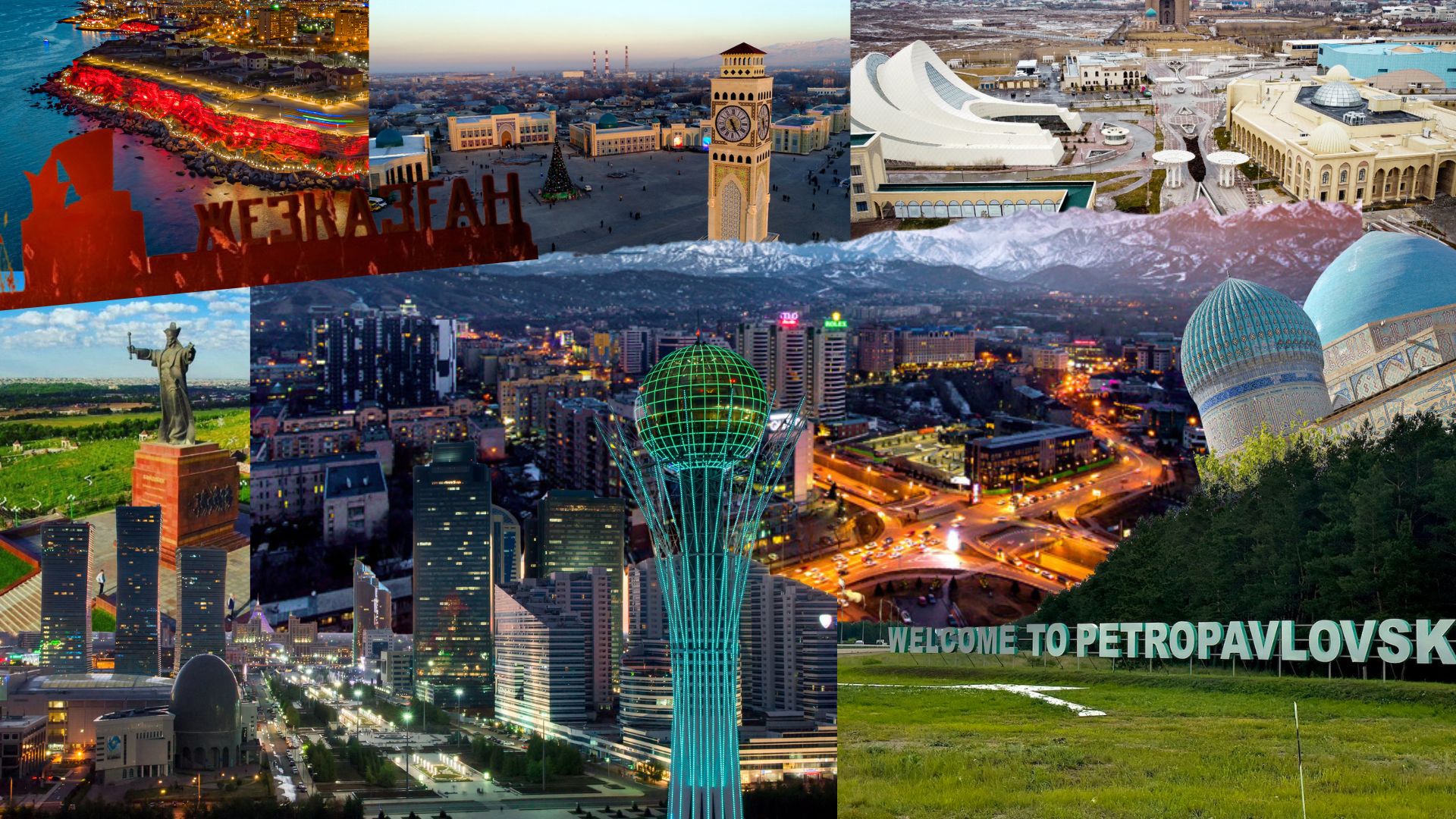
Collage is created by The Astana Times/ Fatima Kemelova.
Astana and Almaty: capitals through time
The history of Kazakhstan’s capital dates back to the 8th–16th centuries, beginning with the ancient Bozok settlement on its southern outskirts.
The city’s first recorded name, Akmola, appeared in the late 19th century when it served as the administrative center of the Akmola Region and a vital stop for caravans traveling between Tashkent and Bukhara. Under the Russian Empire, it was officially known as Akmolinsk, a name documented in the Brockhaus and Efron Encyclopedic Dictionary.
Over the years, the city has been renamed several times—Akmolinsk, Tselinograd, Akmola, and Astana. The latest occurred in 2019 when the city was renamed to Nur-Sultan in honor of the country’s first president, but the decision was reversed in 2022 and the name was back to Astana in 2022—each change reflecting the nation’s evolving identity.
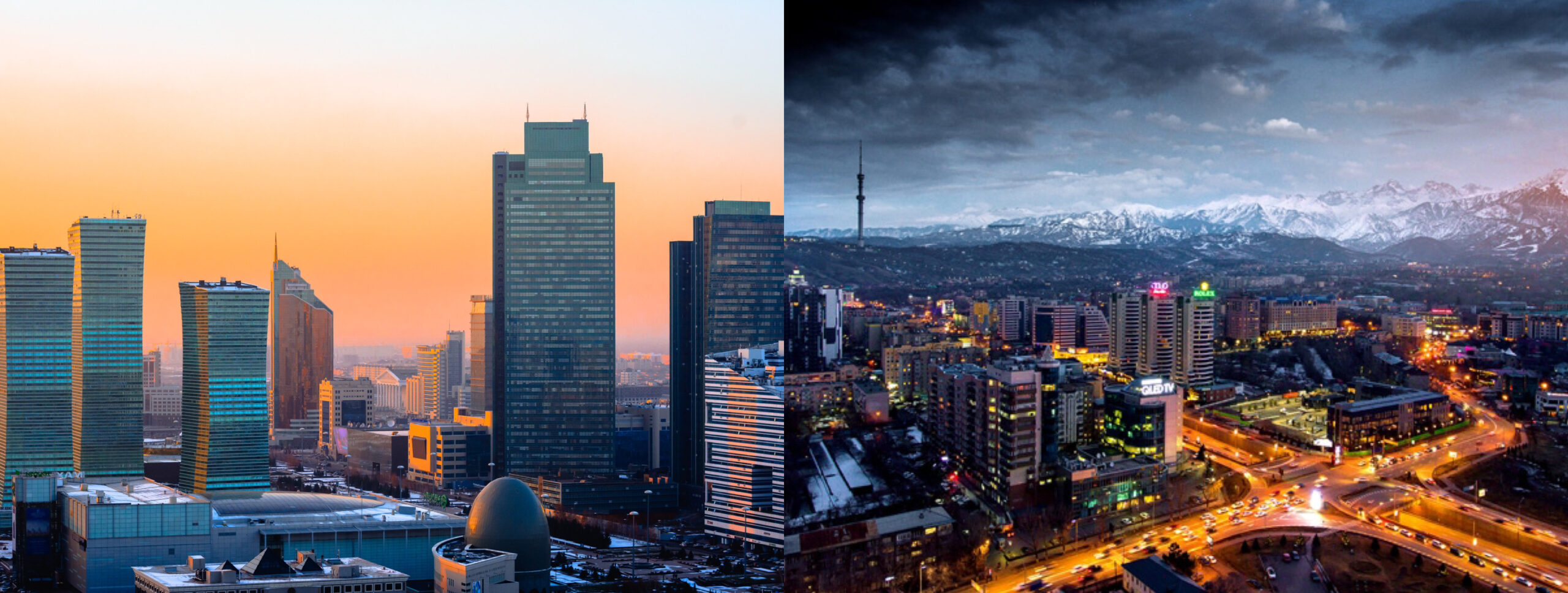
Astana (left). Photo credit: Shutterstock , Night Almaty (right). Photo credit: totalarch.com
Almaty’s history spans centuries. The city was first mentioned as Almalyk in 1390 by Sharaf ad-Din Yazdi and later referred to as Almatu.
Archaeologist Karl Baipakov identified Almaty as the site of medieval settlements. In the 15th century, Kazakh poet and philosopher Asan Kaigy, in search of the mythical Zheruiyk, visited the Zailiysky Alatau foothills and named the area Ush Almaty, inspired by its three rivers, Big, Middle, and Small Almaty.
“The name Almaty derives from the Kazakh word ‘alma’ [apple], meaning place of apples or apple land. The suffix -ty is an archaic form of -ly, also found in names like Yrgaity [a river in the Zhetysu region] and Arganaty, Bugyty [mountain names],” explained Rysbergen.
The city was known as Verny from 1867, and though the Russian-language version changed to Alma-Ata in 1921, archival records confirm that in Kazakh, it remained Almaty.
Cities shaped by natural wealth
Situated on the Caspian Sea’s eastern shore, Aktau was founded in 1959 after oil, gas, and uranium discovery. It was initially called Akkoltyk before being renamed Shevchenko in 1964 in honor of Ukrainian poet Taras Shevchenko. In 1991, it regained its historical name, Aktau.
Rysbergen noted that Aktau likely originates from “Aktas” (white stone), referencing the region’s quartz and limestone formations. However, as the name was officially designated in 1959, some researchers suggest it may have been artificially created rather than drawn from natural features.
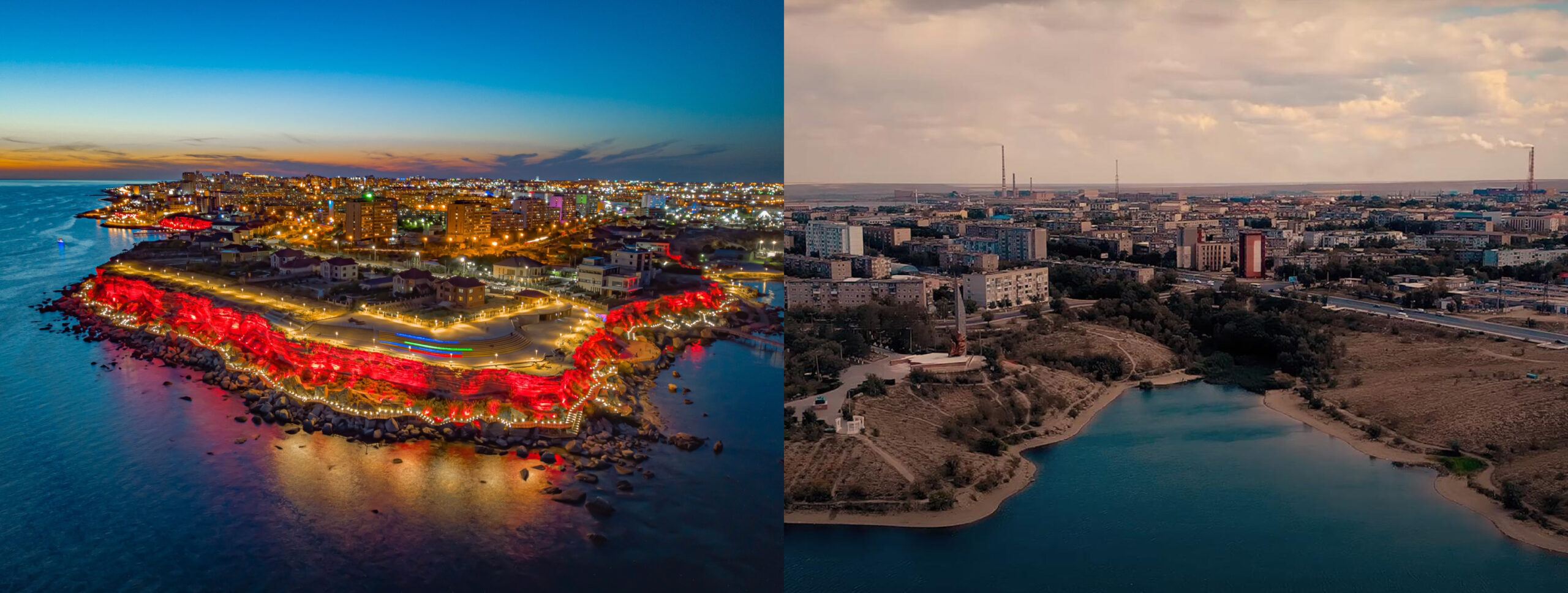
Aktau (left). Photo credit: Shutterstock, Zhezkazgan (right). Photo credit: Adam Space Pictures
Established in 1954, Zhezkazgan’s name reflects its vast copper reserves. Russian explorers had long documented the area’s mineral wealth, and its name combines the Kazakh words “zhez” (copper) and “kazgan” (to dig), signifying a historical center of copper mining.
Founded in 1752 as a military fortress, Petropavlovsk was named after the Apostles Peter and Paul. It became an official city in 1804.
The fortress was built in an area called Kyzylzhar, which means red cliff in Kazakh, known for its reddish-brown soil along the Ishim River that turns deep red during seasonal floods. Mentions of Kyzylzhar appear in “Journey Through Central Asia” (1874) by Arminius Vambery.
Spiritual south: ancient centers of culture
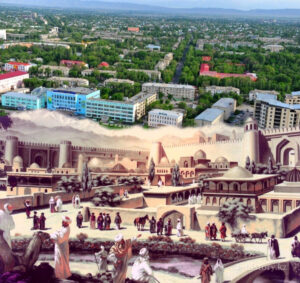
A blend of modern and historic views of Taraz city. Photo credit: e-history.kz
One of Kazakhstan’s oldest cities, Taraz, sits along the Talas River and was first recorded in 568 A.D. by Byzantine envoy Zemarchus. Chinese traveler Xuanzang later described it in 630 A.D. as a key trading hub on the Silk Road.
The city was known as Argu-Talas, Altyn Argu, and Talas-ulys during the eighth century. In the late ninth century, it became part of the Samanid Empire, and by the 11th century, it was the capital of the Karakhanid state.
“Linguists debate its origins; some link Taraz to the Talas River, while others believe Taraz and Talas are distinct names. In ancient Turkic languages, ‘tar/dar’ meant valley or gorge, and ‘az/as’ referred to water or river. By this interpretation, Taraz could mean mountain river,” said Rysbergen.
With a history spanning over 1,500 years, Turkistan is one of the country’s most ancient cities. It was referenced in Arabic sources as Shavgar from the fourth–tenth centuries and later as Yassy (12th–14th centuries).
Following the construction of the Mausoleum of Khoja Ahmed Yasawi, Turkistan became a major spiritual and cultural center.
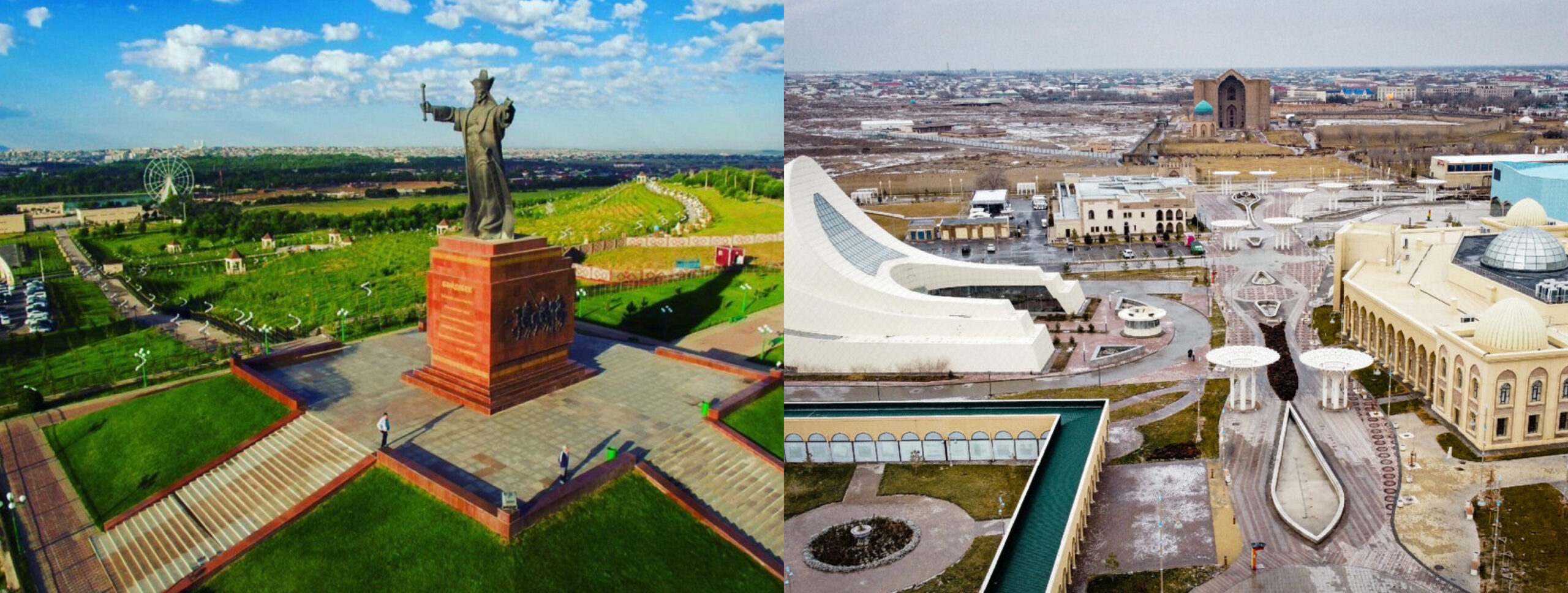
Shymkent (left), a view of the ethnopark beside the grand monument honoring Baidibek Bi. Photo credit: gov.kz, Turkistan(right). Photo credit: newskz
According to Rysbergen, the city’s name derives from “Turk” and “stan,” meaning the land of the Turks.
Shymkent’s name translates to a fortress city surrounded by lush meadows and gardens.
The word “shym” (meaning turf or sod) refers to the material used in the construction of early fortifications, while “kent” (city) originates from Iranian languages. The term “kent” (or kat) has been used since the 10th century B.C.E., with “kat” being the older form.
“The earliest settlement in this area was encircled by a thick turf wall, remnants of which can still be seen today. As the city expanded, the suffix -kent was added, forming Shymkent, meaning fortress city built from sod,” explained Rysbergen.

